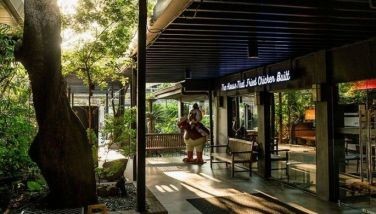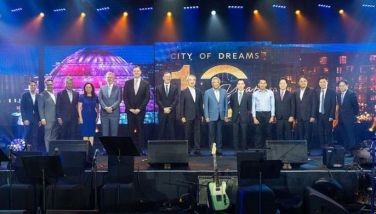The Filipino Christmas
CEBU, Philippines — The Philippines is the only predominantly Catholic nation in Asia. The Christmas season in the country is known to be the longest in the world. The Church-prescribed period – from December 16 through January 6 – is observed, but the celebrations actually start much earlier and last much longer.
Other Catholic nations center their Yuletide celebrations only on December 25, Christmas Day, and the feast of the Epiphany on January 6. In the Philippines, Christmas is a period of unceasing festivities and merrymaking, which sometimes even extend until February 2. This can look like profound piety to some, or sheer excessiveness to others.
Christmas in the Philippines is unique. There are some variations to the fundamental Catholic ways of celebrating the season. These give Filipino Christmas a distinct local character. For instance, a daily dawn Mass is held from December 16 to 24. It is called “Misa de Gallo,” a Spanish term meaning “Mass of the Roosters.” It is called so because the Mass is celebrated at dawn, a time when – especially in the rural areas – roosters begin to crow upon sensing the first rays of sunlight.
In the olden days, the roosters’ crow would rouse up the farmers to go to work at the fields. The early hours of the morning were taken advantage of in order to avoid the scorching heat of the tropical sun as the day proceeded.
The Spaniards introduced Roman Catholicism in the country in the 16th century. Spanish friars taught their new converts that it was their Christian duty to offer nine days of prayer towards the feast of Christ’s nativity. They taught them as well that it was good practice to start the day with prayer. Hence, Mass was celebrated before the farmers would go to the fields.
The Misa de Gallo prompted the emergence of delicacy stalls around the public plazas adjoining the churches, where people usually passed by after hearing Mass. These stalls have survived to this day. In the Visayas and Mindanao, enterprising women serve hot sikwate (native chocolate drink) with puto-maya (sticky rice cooked in coconut milk) or bibingka (rice cake). In Luzon, their own Tagalog delicacies are served. In the big cities, the original makeshift stalls have developed into full-blown night markets.
Also during the Spanish era, and for many years thereafter, Filipinos performed a tableau on Christmas Eve depicting Mary and Joseph’s search for shelter. The main actors would go around the community knocking on every door. The homes would be decorated with star-shaped lanterns, called parol, to light the way of the couple.
The staging of the tableau, called Panunuloyan, has waned considerably through the years and is now practiced only in a few communities in Luzon. But the hanging of the parol continues to be a popular tradition, which has now even grown to the scale of a major attraction in many places of the country.
Many other foreign influences have since contributed to Filipino customs and traditions regarding Christmas. Most notable are such foreign imports as Santa Claus and the Christmas tree. Many small Filipino kids have also come to look forward to Christmas for a carnival – on ice!
Christmas has come to have very strong social, cultural and commercial implications in Philippine life. Reunions of old friends and families are common at Christmastime. So are reconciliations and conflict resolutions. Filipino Christmas is both a domestic and public celebration, bringing together the whole family and the whole community.
There’s the business dimension, too. The long merrymaking results in increased spending; people try to acquire new things with extra incomes from job bonuses. Generosity seems to stand to its full height – gift giving is a standard practice, almost to the point of being obligatory. Stores provide extra consumer motivation by offering attractive bargains.
Old people lament the fading away of the old Filipino Christmas traditions. The say it was better during the country’s early Christian beginnings. Yet even the Christmas originally brought in by the Spaniards was already a product of many earlier adaptations. It seems all things change with the passing of time, all things without exception.
Indeed, Christmas in the Philippines today is a far cry from what it was in the olden days. But many, too, welcome the transformation. The celebrations have become something more – modern, fabulous, colorful. Yet, for the most part, they have remained basically religious and distinctly Filipino!
- Latest


























